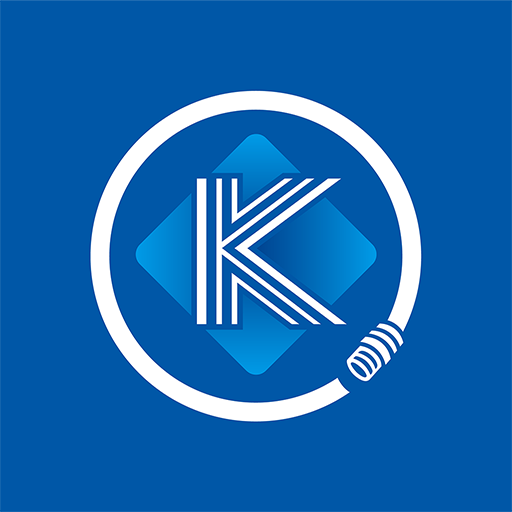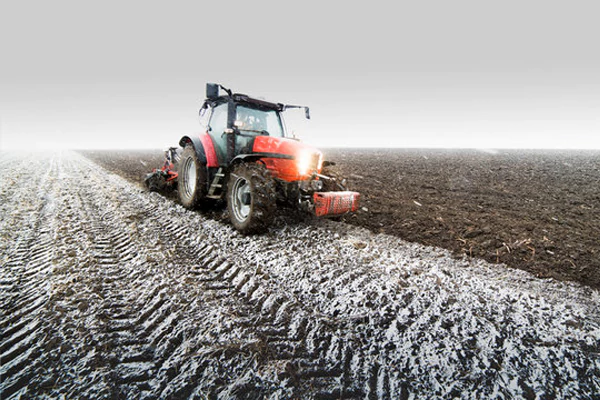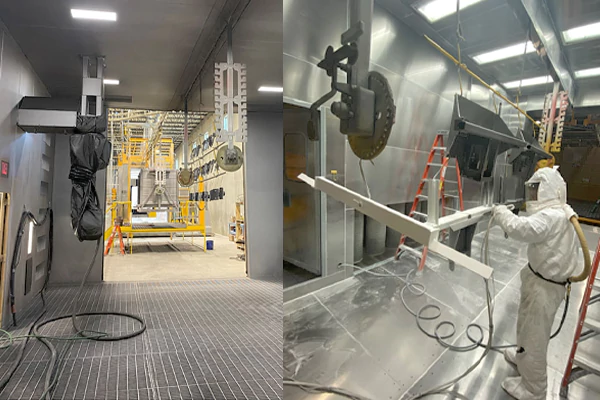Hydraulic fittings with O-rings are essential components in modern hydraulic systems, designed to create robust and leak-proof connections. Unlike traditional metal-to-metal seals, O-rings provide a superior sealing mechanism by deforming to fill microscopic gaps, ensuring system integrity even under high pressures and dynamic conditions.
These specialized fittings come in various designs, each tailored for specific applications and pressure requirements. The integration of O-rings significantly enhances the reliability and efficiency of hydraulic circuits, minimizing fluid loss and reducing maintenance needs across diverse industries.
What are O Ring Hydraulic Fittings?
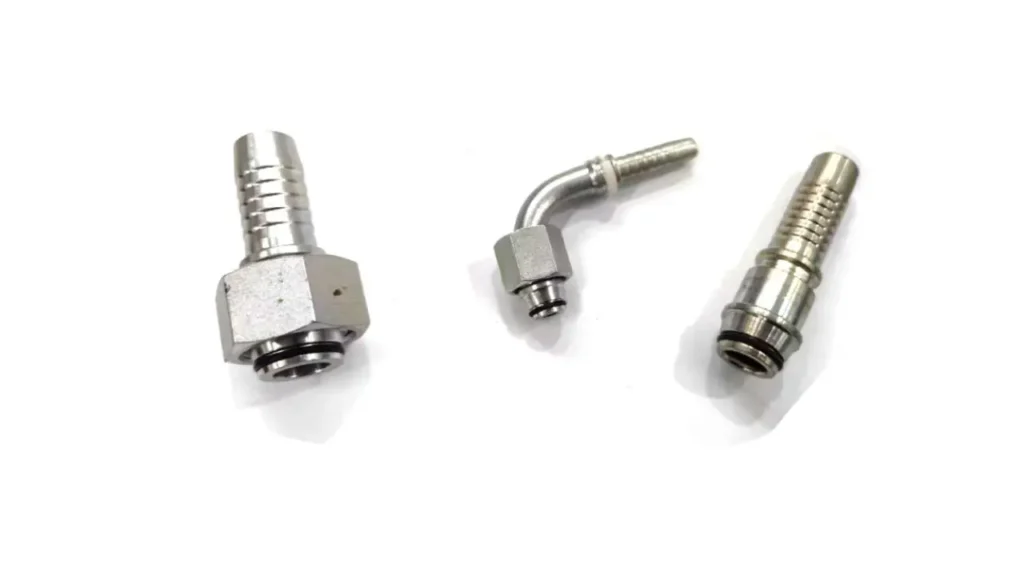
O-ring hydraulic fittings are specialized connectors used in hydraulic systems that incorporate a resilient O-shaped ring, typically made from an elastomer, to create a tight, leak-proof seal. Unlike metal-to-metal sealing methods, the O-ring is compressed within a groove or against a mating surface, deforming to fill any microscopic gaps and prevent the escape of hydraulic fluid.
This design makes them exceptionally effective for maintaining system integrity under high pressures, vibrations, and temperature fluctuations, significantly reducing the risk of leaks and ensuring efficient fluid power transmission.
What is O Ring for Hydraulic Fittings?
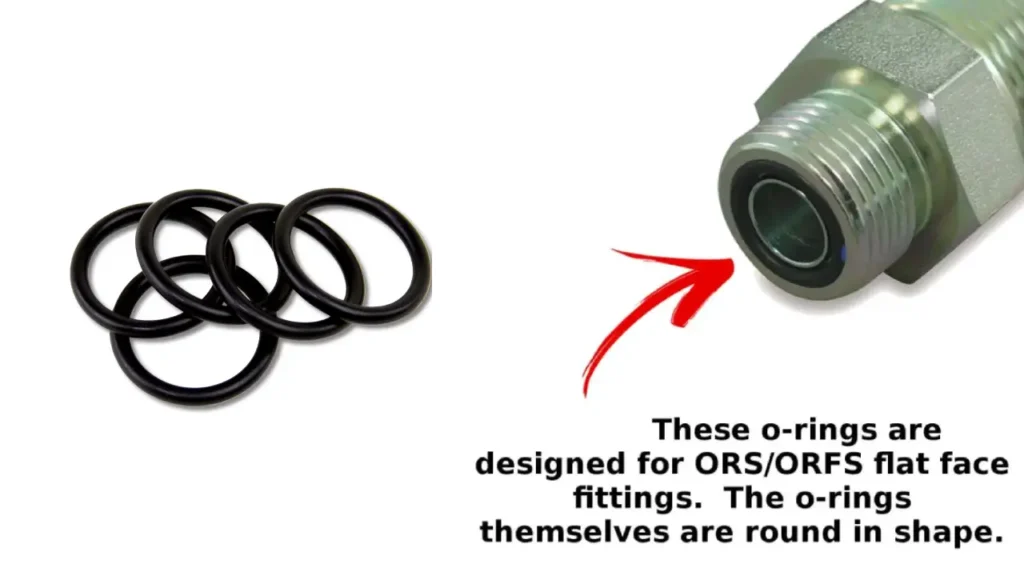
An O-ring for hydraulic fittings is a circular, elastomeric seal designed to prevent fluid leakage at connection points within a hydraulic system. When compressed between mating surfaces, it deforms to fill any gaps or irregularities, creating a tight, resilient barrier that effectively contains hydraulic fluid.
These rings are crucial for maintaining system pressure, preventing contamination, and ensuring the efficient operation of hydraulic components, even under demanding conditions involving high pressure, temperature fluctuations, and vibration.
Types of Hydraulic Fittings With O Ring
O-ring hydraulic fittings are essential for achieving leak-free connections in hydraulic systems. They utilize an elastomer O-ring for superior sealing compared to traditional metal-to-metal seals. This design ensures system integrity and efficiency under various operating conditions.
O-ring Boss (ORB) Fittings
Design Features and Construction
ORB fittings feature a straight thread on the male end with a precisely machined groove for an O-ring at the base. When assembled, this O-ring compresses into a chamfered or counterbored area within the female port, creating a highly effective and reliable seal. The straight threads, unlike tapered pipe threads, do not rely on thread interference for sealing, which reduces the risk of overtightening damage.
Benefits
The primary benefit of ORB fittings is their excellent leak prevention, even under high pressure and significant vibration, making them very reliable. Their design also allows for easier and faster assembly compared to tapered pipe threads, as they don’t require sealant tapes or compounds. Furthermore, ORB connections are reusable, simplifying maintenance and reducing costs over the system’s lifespan.
Uses
ORB fittings are widely used in a broad spectrum of hydraulic applications, particularly in industrial machinery, mobile equipment, and agricultural hydraulics. They are preferred in systems where leak integrity is paramount and where connections may need to be frequently disassembled and reassembled for maintenance or component replacement.
O-ring Face Seal (ORFS) Fittings
Construction
ORFS fittings are distinguished by an O-ring seated in a groove on the flat face of the male fitting. When tightened, this O-ring is compressed against the flat face of the mating female fitting or tube adapter. This metal-to-metal contact with the O-ring compression creates a robust seal that is highly resistant to vibration and pressure surges.
Benefits
ORFS fittings offer exceptional resistance to leakage, particularly in applications subject to high pressure impulses and severe vibration. Their flat face design allows for easier tubing routing in tight spaces, and the inherent reusability of the O-ring connection makes them practical for systems requiring frequent connection and disconnection. They also minimize the risk of overtightening.
Uses
ORFS fittings are predominantly found in demanding environments such as heavy construction equipment, agricultural machinery, and mining applications. They are ideal for systems where fluid lines are exposed to harsh conditions and where a reliable, shock-resistant seal is critical for continuous operation and safety.
SAE Straight Thread O-ring (STOR) Fittings
Construction
SAE Straight Thread O-Ring fittings are similar to ORB fittings in their use of a straight thread and an O-ring for sealing. The O-ring is typically located in a groove on the male threaded portion, and it seals against a machined surface in the female port. The design focuses on providing a durable and reliable seal that can withstand high pressure and vibration without leaking.
Benefits
STOR fittings offer excellent leak prevention and are highly resistant to overtightening due to their straight thread design, which prevents the wedging effect seen in tapered threads. Their reusability and ease of assembly contribute to reduced maintenance time and overall system cost. The O-ring ensures a consistent and effective seal.
Uses
SAE STOR fittings are common in a wide array of hydraulic and pneumatic applications. They are often used in automotive power steering systems, industrial hydraulic power units, and various fluid transfer applications where a robust, leak-free connection is essential for operational efficiency and safety.
JIC 37° Flare Fittings with O-Rings
Construction
While standard JIC 37° flare fittings rely on a metal-to-metal conical seal, some specialized versions incorporate an O-ring for enhanced sealing. In these “Flare-O” or JIC O-ring fittings, the O-ring is typically placed in a separate groove either on the face of the flare or within the cone, providing an additional sealing barrier alongside the traditional metal flare.
Benefits
The addition of an O-ring to a JIC flare fitting provides an extra layer of leak protection, significantly improving the seal’s reliability, especially in systems with minor imperfections or those subjected to frequent thermal cycling. This hybrid design combines the robust mechanical connection of a flare with the superior sealing capabilities of an O-ring.
Uses
JIC 37° Flare fittings with O-rings are often used in applications where a higher level of leak integrity is desired than a standard JIC connection can provide, or where older systems might have slight sealing issues. They are found in industrial hydraulics, mobile equipment, and fluid transfer systems where enhanced sealing security is beneficial.
Metric O-Ring Fittings
Construction
Metric O-ring fittings are designed to conform to international metric sizing standards while utilizing the fundamental O-ring sealing principle. They feature specific metric thread sizes and O-ring groove dimensions, ensuring compatibility with metric tubing and components. The O-ring is typically compressed within a counterbore or against a flat face, depending on the specific design (e.g., DIN 2353/ISO 8434-1 fittings with O-ring seals).
Benefits
The primary benefit of metric O-ring fittings is their adherence to global metric standards, facilitating international interchangeability and simplifying design in systems built with metric components. They offer excellent leak-proof performance and are suitable for high-pressure applications, contributing to the reliability and safety of hydraulic systems worldwide.
Uses
Metric O-ring fittings are widely used in hydraulic systems across Europe and Asia, where metric standards are prevalent. They are commonly found in construction machinery, industrial manufacturing equipment, agricultural vehicles, and various other applications that utilize metric tubing and components for fluid power transmission.
Here’s a chart summarizing the types of hydraulic fittings that use O-rings:
| Fitting Type | Sealing Mechanism | Key Features | Common Benefits | Typical Uses |
| O-ring Boss (ORB) Fittings | O-ring compresses into a chamfered port | Straight thread; O-ring at thread base | Excellent leak prevention; easy assembly; reusable | Industrial machinery, mobile equipment, agricultural hydraulics |
| O-ring Face Seal (ORFS) Fittings | O-ring compresses between flat faces | O-ring in male face groove; metal-to-metal contact | High resistance to vibration & pressure impulses; easy routing | Heavy construction, agriculture, mining equipment |
| SAE Straight Thread O-ring (STOR) Fittings | O-ring seals against machined surface in port | Straight thread; O-ring in male threaded portion | Reliable leak prevention; high pressure tolerance; reusable | Automotive power steering, industrial hydraulic units, fluid transfer |
| JIC 37° Flare Fittings with O-Rings | O-ring supplements metal-to-metal flare seal | 37° flare with added O-ring groove | Enhanced leak integrity; combines flare strength with O-ring seal | Applications needing extra leak protection; older system upgrades |
| Metric O-Ring Fittings | O-ring compresses within a counterbore or flat face | Metric thread sizes; specific O-ring groove dimensions | Adherence to global standards; reliable high-pressure sealing | European & Asian hydraulic systems; construction machinery; industrial equipment |
How to Choose O Ring Hydraulic Fittings?
Choosing the correct O-ring hydraulic fitting is crucial for system integrity and longevity, as an improper selection can lead to leaks, premature failure, and costly downtime. The decision should be based on a thorough understanding of your system’s specific requirements, including operating conditions, fluid compatibility, and industry standards.
- Pressure and Temperature Ratings: Always ensure the chosen fitting’s pressure rating exceeds the maximum system operating pressure, including potential surge pressures. Similarly, the O-ring material must be compatible with the system’s operating temperature range, as extreme heat or cold can degrade the O-ring’s sealing capabilities.
- Fluid Compatibility: The O-ring material must be chemically compatible with the hydraulic fluid being used. Incompatible materials can swell, shrink, or degrade, leading to seal failure. Common O-ring materials include Nitrile (Buna-N), Viton (FKM), EPDM, and Silicone, each suited for different fluid types and temperature ranges.
- Application Environment: Consider the external environment where the fitting will operate. Factors like exposure to UV light, ozone, abrasive particles, or corrosive chemicals can influence the choice of both fitting material (e.g., steel, stainless steel, brass) and O-ring compound.
- Sealing Mechanism (Fitting Type): Select the appropriate fitting type based on the desired sealing performance and system design. ORB fittings are excellent for general-purpose high-pressure sealing. ORFS fittings excel in high-vibration and impulse applications. SAE 4-Bolt Flanges are for larger diameter and very high-pressure lines.
- Industry Standards and Thread Type: Ensure the fitting adheres to relevant industry standards (e.g., SAE, ISO, DIN) and has the correct thread type (e.g., NPT, BSPP, Metric) to guarantee compatibility with existing components and prevent mismatches that can lead to leaks or damage.
- Ease of Installation and Maintenance: Some fitting types offer easier installation and maintenance. For instance, ORFS fittings allow for quick, tool-free connection in some designs. Consider the ease of O-ring replacement and accessibility for future servicing.
Conclusion
O-ring hydraulic fittings, encompassing types like ORB, ORFS, and SAE 4-Bolt Flanges, are indispensable for creating secure, leak-proof connections in diverse hydraulic systems. Their design ensures superior sealing under varying pressures and conditions, significantly enhancing system reliability and efficiency. These fittings are crucial for preventing fluid loss and maintaining operational integrity across numerous applications.
The integration of O-rings in hydraulic fittings represents a significant advancement in sealing technology. This innovation leads to greater system uptime, reduced maintenance, and improved overall safety compared to traditional sealing methods. Their widespread adoption underscores their proven effectiveness in demanding industrial environments.
For dependable and high-quality O-ring hydraulic fittings, consider sourcing your wholesale needs from Kingdaflex. We offer a comprehensive range designed for durability and optimal performance.

